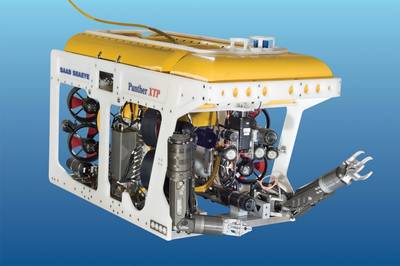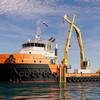ROV Saab Seaeye Panther Bests Persian Gulf Currents
Abu Dhabi-based, CCC (Underwater Engineering), saves on operational costs with Saab Seaeye Panther XT Plus ROV.
“Its ten-thruster power easily overcomes the four-knot currents,” says CCC’s ROV Manager, Tavis Letherby, “and having two powerful Schilling manipulators to hand is a combination that stands out from everything else.”
He finds that 90 per cent of the tasks normally undertaken by CCC’s 150 HP hydraulic work-class ROVs is now possible with the Panther, bringing major savings in costs and logistics.
He quotes the ease of moving a 14 ton system rather than one weighing 60 tons; or having a faster 12 hour set up, rather than taking four days; and providing just 150 kVA of power generation instead of 500 kVA. Adding that spares and repairs are also cheaper.
“Being able to use smaller ships in support of a smaller system is a big advantage in the upper Gulf,” says Letherby, who points out that big vessels are not as viable in the shallow waters of the region as in other parts of the world, where Its hyper-saline waters also make the electric vehicles better suited to the Gulf when compared with an hydraulic ROV that can have problems keeping oil cool.
What particularly wins over his clients, says Letherby, is the unique combination of 10 powerful thrusters and twin Schilling manipulators, which means the ROV can hold station in strong cross currents whilst working at complex or robust tasks.
“In the Panther, we get a vehicle that has 50 per cent more power than any other ROV of its type, can swim 30 per cent faster – and has a manipulator package with the dexterity of a human arm, yet the muscle power of an hydraulic work ROV.”











